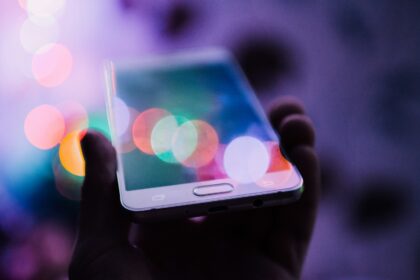Imagine your home as a country, filled with valuable assets. These include your savings, family photos, and the power control box. To safeguard these, you employ security measures like locks, alarms, and cameras. Cybersecurity operates on the same principle but in the digital realm. It involves digital locks, alarms, and guards protecting our virtual nation.
Consider a scenario where someone suggests reducing your home’s security to save money. This might include canceling the alarm service or hiring less vigilant guards. This is similar to the debate in the United States about Trump administration cybersecurity funding cuts. We will explore why these decisions were made and their possible outcomes, using clear language.
What Is This “Cybersecurity” Thing, and Why Does It Cost So Much?
Cybersecurity is not a simple software installation. It’s a continuous battle, akin to a game of cat and mouse. The “good guys” are experts who build digital defenses. The “bad guys” are hackers and cybercriminals who seek vulnerabilities every day.
Maintaining these defenses is costly. The cybersecurity budget covers several essential areas:
- People: Hiring top talent is key. This includes analysts, ethical hackers, and digital commandos. Their expertise comes at a high cost.
- Technology: Advanced software and hardware are needed. These must be updated regularly to counter new threats.
- Training and Education: Employees must be trained to avoid phishing attacks. This is critical for all levels of staff.
- Research and Development (R&D): Staying ahead of threats requires investing in new technologies and defense methods.
To better understand these costs, consider a simplified breakdown, similar to what a large corporation or government agency might use.
| Expense Category | What the Money Is Spent On (Examples) | Why Is It Important? |
|---|---|---|
| Personnel (The Experts) | Salaries for analysts, engineers, incident response specialists, threat hunters. | Without people, even the best technology is useless. They are the ones who think, analyze, and react. |
| Hardware & Software | Licenses for antivirus software, firewalls, secure servers, network monitoring systems. | These are the tools and defensive walls. Without them, we are exposed and vulnerable. |
| Training & Awareness | Courses for employees, attack simulations, educational materials, phishing campaigns. | The human is often the weakest link. Training strengthens this critical element of defense. |
| Research & Development (R&D) | Creating new algorithms, working on AI for defense, developing cryptographic methods. | This allows you to anticipate hackers’ moves, not just react to them. |
A New Sheriff in Town: The Philosophy of Cuts
Donald Trump’s inauguration brought a promise to “drain the swamp” in Washington. He aimed to slash spending, streamline bureaucracy, and run government like a business. This philosophy extended to cybersecurity, where outdated programs and unnecessary positions were targeted for elimination.
The elimination of the White House Cybersecurity Coordinator position was a notable first step. This move was akin to removing the head of security for the entire neighborhood. The coordinator ensured all agencies, from the FBI to the Department of Homeland Security (DHS), were in sync. Critics argued that without this central figure, the nation was vulnerable to cyber threats.
Consider a small hospital where the director, Mr. Smith, cut costs by turning off hallway lights and lowering room temperatures. Initially, the savings were clear. Yet, a nurse’s injury and a patient’s illness revealed the hidden costs of such cuts. This scenario mirrors the dilemma faced by those making the Trump administration cybersecurity funding cuts.
The Agency in the Crosshairs: CISA and Infrastructure Protection
CISA, the Cybersecurity and Infrastructure Security Agency, is at the forefront of civilian cyber defense. Its mission is to safeguard critical infrastructure, including power plants, water systems, and telecommunication networks. These are the backbone of the nation’s functionality.
During Trump’s tenure, CISA’s budget was a contentious issue. Proposals aimed to shift more responsibility to the private sector, arguing that companies should protect their own systems. While this might seem reasonable, it overlooks the interconnectedness of modern infrastructure. An attack on one element can cripple the entire system.
Experts highlighted CISA’s role as a unifying force. It facilitates information sharing among companies and state agencies, enabling swift responses to threats. Limiting CISA’s funding was akin to reducing the budget of an air traffic control tower. Such cuts increase the risk of catastrophic failures.
The SolarWinds Wake-Up Call: A Case Study in Vulnerability
The SolarWinds hack in late 2020 was a stark reminder of the stakes. It was a sophisticated, patient, and devastating espionage campaign. Hackers, believed to be backed by a foreign state, compromised SolarWinds’ software, affecting thousands of organizations, including U.S. government agencies.
The attackers embedded malicious code in a legitimate software update, gaining access to networks. This was akin to a spy replacing locks with their own, granting them access to every office. For months, they silently stole data and observed operations, highlighting the massive scale of the breach.
The SolarWinds incident highlighted the need for a robust national defense. Critics pointed to funding cuts as a real-world example of the consequences. They argued that a fully funded CISA could have detected the intrusion sooner. A dedicated White House Cybersecurity Coordinator would have been key in a unified government response.
This event showed the real-world effects of the Trump administration’s cybersecurity funding cuts. It turned a theoretical debate into a tangible crisis.
“You can have the strongest army in the world, but if a hacker can shut down your power grid with a laptop from the other side of the globe, your tanks and planes won’t do you much good. Investing in cyber defense isn’t a luxury; it’s the foundation of modern national security.” – Anonymous senior intelligence analyst.
The “Pro” Arguments: Was There a Method to the Madness?
It’s unfair to dismiss the Trump administration’s policy as purely negative. Supporters had strong arguments. They believed that simply throwing money at a problem doesn’t solve it. Instead, they focused on different approaches:
- Partnership with the Private Sector: They believed tech giants like Google, Microsoft, and Amazon have vast knowledge and resources. Instead of building everything from scratch, it was better to tighten cooperation with them.
- Efficiency and Eliminating Redundancy: Over the years, many government programs and agencies with overlapping responsibilities had grown. The cuts were intended to force the system to self-clean and get rid of ineffective projects.
- Focus on Offense: Some funds were shifted from defensive programs to strengthening offensive capabilities—that is, the ability to conduct cyberattacks against enemy states. The philosophy was simple: the best defense is a good offense.
The table below summarizes the key changes and the arguments from both sides.
| Decision / Change | Administration’s Argument (FOR) | Critics’ Argument (AGAINST) |
|---|---|---|
| Eliminating the Cybersecurity Coordinator | Simplifies structure, reduces bureaucracy. Duties will be absorbed by other departments. | Lack of central command in a crisis. Risk of information chaos and delayed response. |
| Proposed Cuts for CISA | The private sector should pay for its own protection. The government shouldn’t fund everything. | Critical infrastructure is a common good. An attack on a private company hits all of society. |
| Reducing Grants for Local Governments | States and cities should be more financially self-sufficient and prioritize their own security. | Small entities become easy targets, creating weak points in the nationwide security system. |
| Shift to Offensive Cyber | Deterrence through strength. Being able to strike back is the best way to prevent an attack. | Neglects the fundamental need for strong shields. An offensive focus can escalate conflicts. |
Conclusion: A Lesson for the Future
The debate over the Trump administration cybersecurity funding cuts reveals a fundamental tension. It’s between a lean, decentralized, and frugal government and one that invests in strong defensive mechanisms. The truth likely lies in the middle. Efficiency and avoiding waste are important. Yet, the digital world is so dangerous that saving money on security can be very costly.
Recent events, like the SolarWinds attack and the rise of ransomware, have shown our adversaries are not sleeping. They are organized, well-funded, and creative. Defending against them requires continuous, stable investment in people and technology. This is not a one-time expense but a permanent cost of maintaining security in the 21st century, like spending on the military or police.
The tale of the Trump administration’s cybersecurity funding cuts serves as a critical lesson. It highlights that in today’s interconnected world, national security extends beyond traditional military might. It encompasses the digital realm, where robust cybersecurity measures are as vital as any physical defense.
These measures are safeguarded by a team of skilled, vigilant experts. Their work is to fortify the digital borders that protect our critical infrastructure and personal data. The consequences of underfunding this critical area are dire, as seen in the recent surge in cyberattacks.
It’s clear that the Trump administration’s cybersecurity funding cuts were a misstep. This decision not only jeopardized national security but also undermined the trust of the public. It underscored the importance of investing in cybersecurity, even when it seems costly. In reality, the long-term benefits far outweigh the initial expenses.
As we navigate the complexities of the digital age, it’s imperative to recognize the value of cybersecurity. It’s not just about saving money; it’s about safeguarding our future. The story of these funding cuts serves as a stark reminder of the risks we face when we neglect our digital defenses.
























